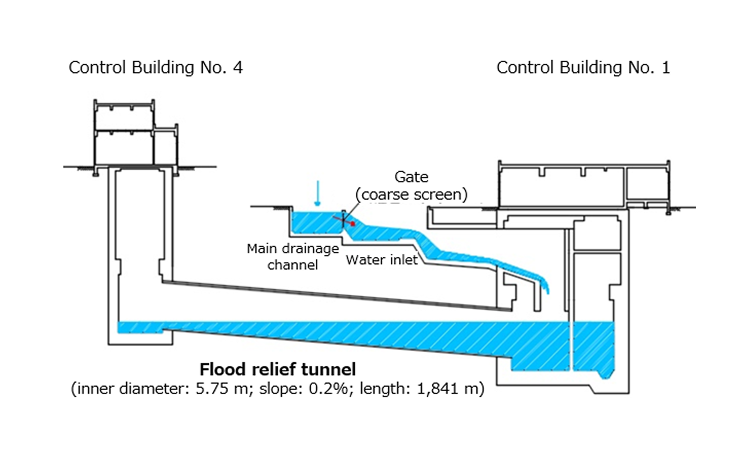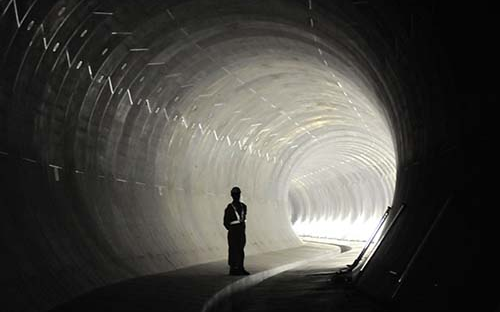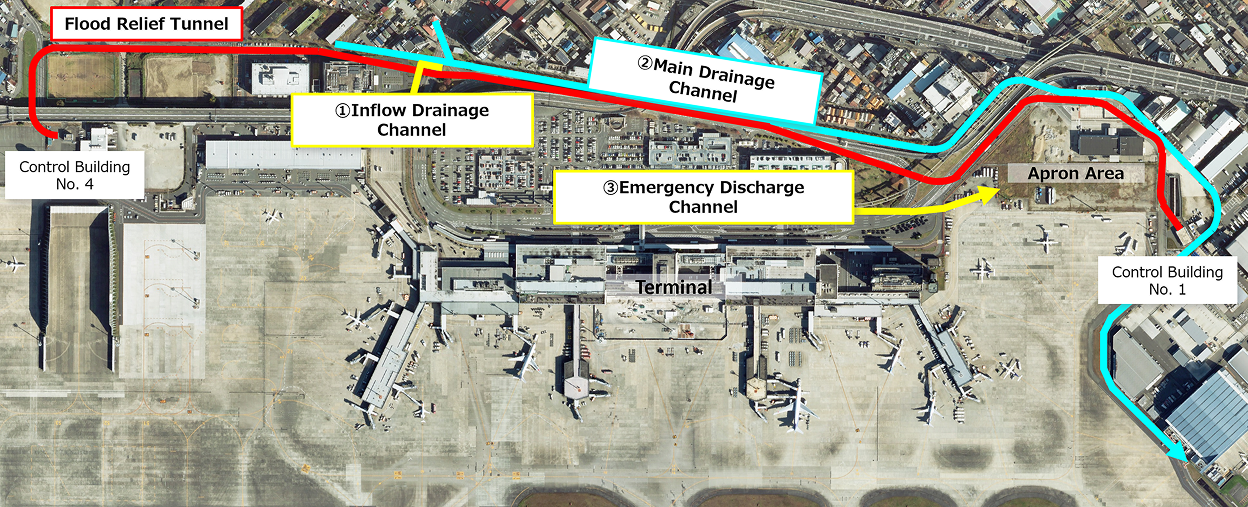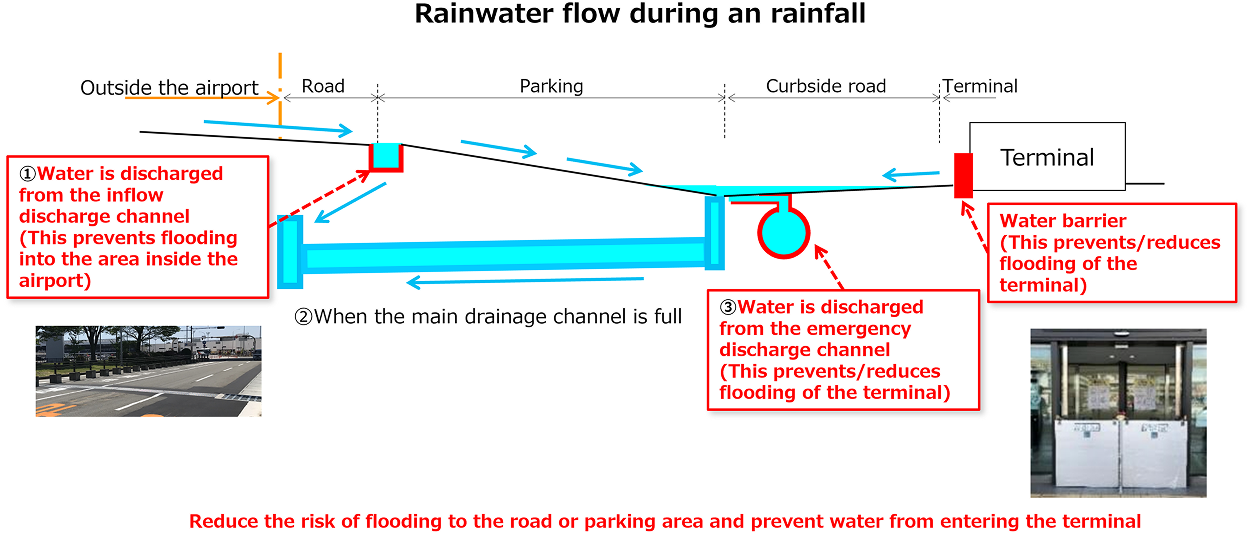Efforts to Cope with Torrential Rain
Flood relief tunnel
The frequent torrential rains that occurred from 1994 to 1999 caused extensive damage, such as flooding, to the airport terminal facilities and residential areas surrounding Osaka Itami Airport, as the expansion of facilities at the airport and urban development in the surrounding areas increased the amount of rainwater runoff into the airport. To address this issue, we developed large-capacity stormwater retention pipe facilities in cooperation with Osaka Prefecture and the national government. This facility has the ability to effectively store excess rainwater during rainfall events exceeding 49 mm per hour.

Flood relief tunnel

Inside the flood relief tunnel
The inner diameter is 5.8 m, and the total length is 1.8 km. It can retain 45,000 m3 of water. Once the water level of the main drainage channel goes down, the water stored in the tunnel will be pumped out and released into the main drainage channel.
(Construction started in 2005 and completed in February 2008; the use started in July 2008)
Development of Emergency Discharge Channels, etc.
Kansai Airports has also newly constructed emergency discharge channels and other facilities to further counter the risk of flooding damage from torrential rains due to the recent climate change. Furthermore, a system was established to automatically trigger alerts by monitoring water levels within the emergency discharge channels. Based on these alerts, flood control measures are swiftly implemented at locations such as the passenger terminal buildings. As a result, the risk of flooding at the passenger terminal buildings during heavy rainfall, with a maximum recorded rainfall of 133.5 mm per hour, has been eliminated.

Location of the flood relief tunnel and the emergency water discharge channel

The inside diameter is 1.2 m, and the total length is 460 m. Incoming water will be released to the apron area, which is wider than the service road and the parking area.
(Construction started in 2020; construction completed and the use started in June 2021)
